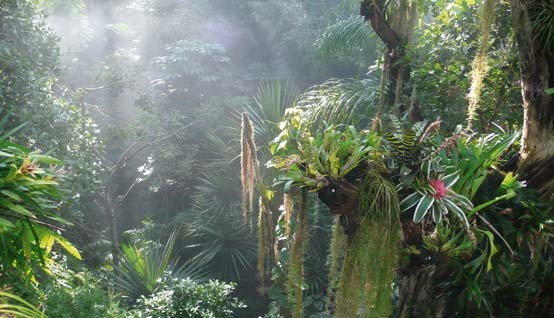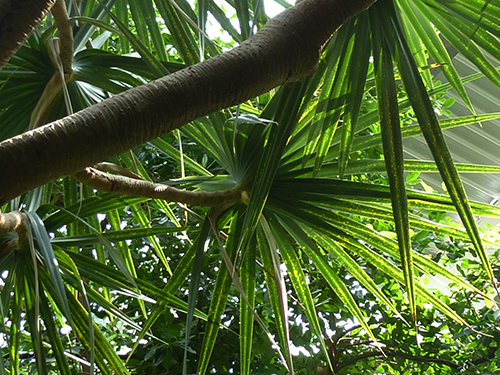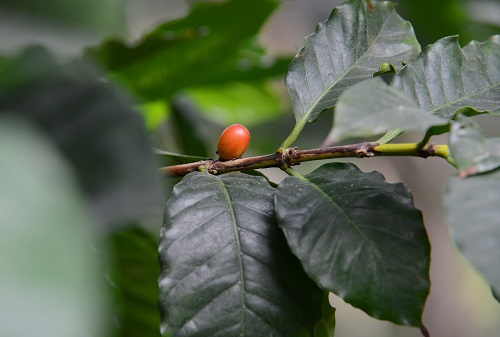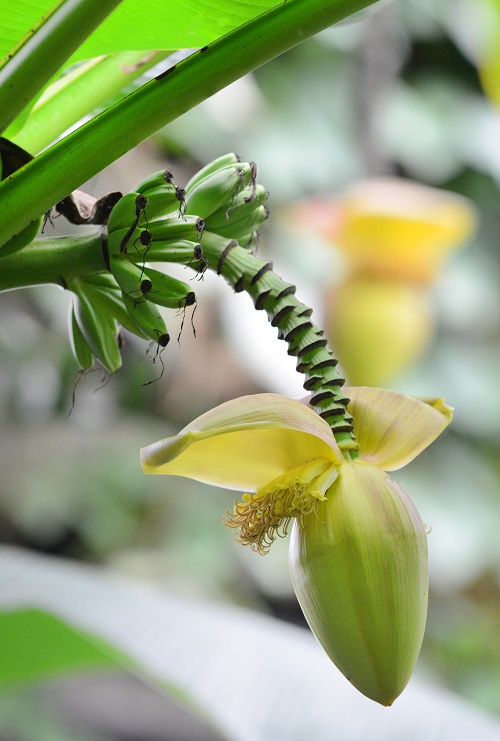Plants in the tropical world
More than 20000 plants populate the Biosphäre Potsdam, among them some of the most gorgeous plants from the tropical forests. Climbing plants twine up and around trees and are hanging off the treetops. Crop plants sprout fruits: lemons, coffee and cocoa beans
Bromeliads and orchids are bright touches of color in the thick green of the rainforest. Especially during the annual orchid bloom in spring the Biosphäre Potsdam transforms into a colorful sea of flowers.
Traveler’s Palm
The traveler’s palm (Ravenala) is spread out just like a huge stretched out fan in front of the visitors. The heraldic tree of Madagascar can get as tall as 15 meters and is versatile in use. Its leaves can be used to build roofs. The traveler’s palm is named after its ability to store water. It can also help travelers that got lost, due to its tendency to grow in an east-west line.
Therefore it offers water and orientation to travelers.
Orchids
Orchids are widespread on almost all continents – for example in Brandenburg (Germany) you can find the species of Helm Orchid on relatively dry grass. Most orchids, however, are located in the tropics, where they usually grow as epiphytes in tree crotches. The top of tropical rainforests is very dense, that’s why only very little light falls on plants which grow on the ground. Due to their epiphytic way of life orchids choose a location with more light, therefore they have to grow without a reliable nutrient and water supply.
The screw pine
Originally native to Madagascar, the screw pine (pandanus utilis) is now widely spread in many tropical regions worldwide.
The fibers from the leaves of the screw pine are used in today’s world, e.g. as packaging material. The horizontally striped bark of the screw pine is said to have inspired Leonardo Da Vinci to invent the double helix spiral stairs.
This is one example that shows how nature is a model for many inventions of men.
Coffee Tree
Coffee is probably one of the most popular hot drinks, especially in the morning. In the Biosphäre Potsdam you can take a closer look at the evergreen plant “Coffea”, which supplies the popular coffee beans. Usually after 3 to 4 years white flowers appear, where unripe green fruits develope. The ripe fruits are due to their color and shape similar to small cherries. Unlike cherries, however, coffee berries have less pulp and contain two seeds per fruit. The genus “Coffea” includes several species, of which only “Coffea arbica” is used to harvest coffee beans.
Banana
Bananas (Musa) are evergreen herbaceous plants. Although its trunk looks solid, it is not woody but consists of several dense layers of leaves. The fruits grow in so-called bunches on the banana trees. Each bunch consists of several hands. Individual fruits are called "fingers". The banana as a fruit is a hybrid species that is a mixture of different species of the genus “Musa”. Unfortunately, because of banana plantations, large parts of the tropical rainforest were cut down.
Vanilla
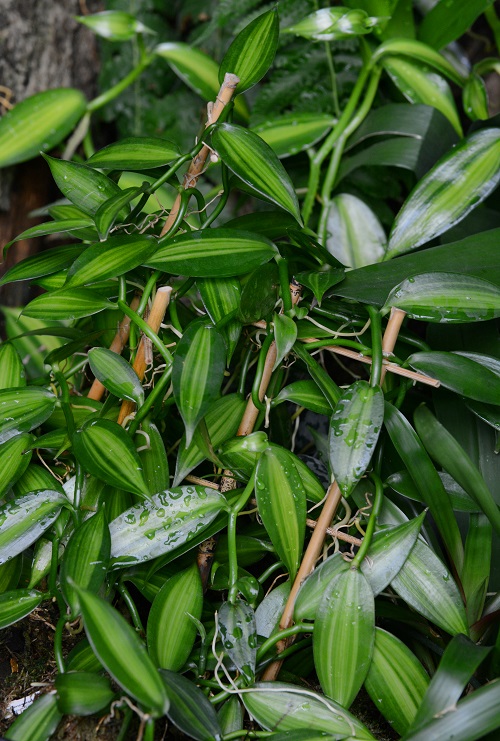
The vanilla (vanilla planifolia) is the only kind of orchid that is cultivated as a crop plant by men. Aside from cocoa and pepper, vanilla was the third important ingredient in the Aztecan drink of the gods ‘Xocolatl’.
In the 16th century Spanish conquistadores brought the plant to Europe. Today vanilla is one of the most expensive spices and is used mostly for sweet dishes.
Powder Puff Plant
The powder puff bush (Calliandra grandiflora), originally from Mexico, is used as an ornamental plant all over the world due to its striking red inflorescences. The shrub owes its name to its inflorescences, as their shape is reminiscent of powder puffs. The Aztecs already used the plant as a narcotic in pre-Hispanic times and it is still used in Mexican folk medicine today.


